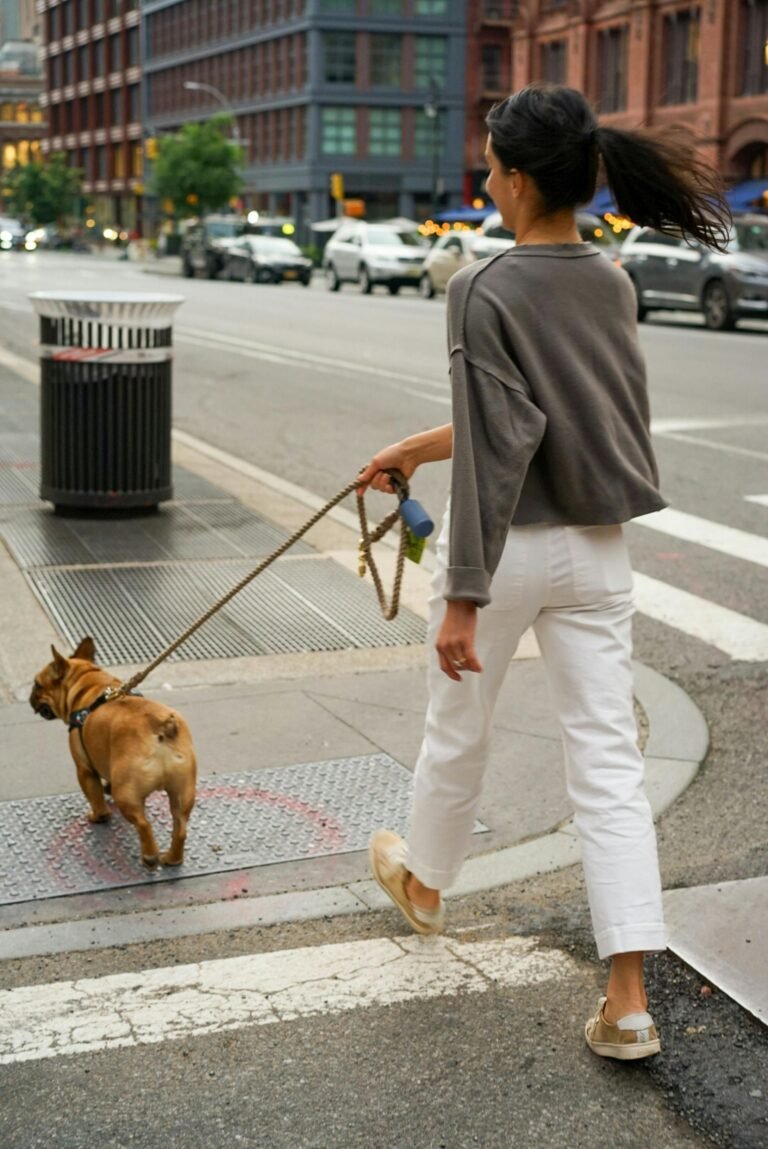Introduction
Being a dog parent means caring deeply — not just for your pup, but for the planet they play on. Every choice we make — from food to toys to waste disposal — leaves an environmental footprint. The good news? You don’t have to overhaul your life to live sustainably with your dog. With a few mindful swaps and habits, you can reduce waste, support eco-friendly brands, and create a healthier world for both humans and hounds. Here’s how to start living greener with your furry best friend.
Why Sustainability Matters in Pet Care
The pet industry is booming — and so is its environmental impact. From plastic packaging to meat-heavy diets, the carbon pawprint of dogs adds up. By making small changes, pet owners can reduce waste, conserve resources, and promote ethical practices without sacrificing convenience or care. Sustainability isn’t about perfection — it’s about conscious progress.
1. Choose Sustainable Dog Food and Treats
Dog food production contributes significantly to global emissions, especially through meat sourcing. Luckily, eco-friendly options are growing fast.
- Look for responsibly sourced proteins: Choose brands that use humanely raised meats, fish from sustainable fisheries, or insect-based protein.
- Consider plant-forward diets: Some dogs thrive on partially plant-based or flexitarian formulas. Consult your vet before switching.
- Buy in bulk or recyclable packaging: Larger bags and minimal plastic reduce waste.
- DIY treats: Bake simple snacks using oats, pumpkin, or peanut butter to cut packaging and save money.
Small choices at the food bowl can have a big ripple effect for the planet.
2. Rethink Dog Waste Disposal
Dog waste might seem harmless, but it adds millions of tons of methane and bacteria to the environment each year. Go green with these alternatives:
- Use compostable poop bags: Look for ASTM-D6400 certified options made from cornstarch or plant-based plastics.
- Try a pet waste composting system: Some yards can safely compost dog waste using dedicated bins (not for edible gardens).
- Avoid flushing poop bags: Even biodegradable ones can clog plumbing unless labeled “flush-safe.”
Proper disposal prevents bacteria from entering waterways and reduces landfill waste — a win for the planet and your neighborhood.
3. Go for Sustainable Toys and Gear
Many dog toys and accessories are made from synthetic materials that end up in landfills. Opt for sustainable alternatives that last longer and decompose naturally.
- Natural materials: Look for toys made from hemp, jute, natural rubber, or organic cotton.
- Durable over disposable: One sturdy rope toy can replace dozens of cheap plastic ones.
- Upcycle household items: Old T-shirts can become tug toys, and cardboard tubes make great treat puzzles.
- Eco-friendly gear: Collars, harnesses, and beds made from recycled plastics or bamboo fabrics are stylish and sustainable.
Tip: support local artisans or small eco-brands — less shipping, less waste, and more community impact.
4. Choose Green Grooming Products
Shampoos, sprays, and wipes often contain harsh chemicals that harm the environment (and sensitive skin). Switch to natural grooming products:
- Pick biodegradable, sulfate-free shampoos with organic ingredients.
- Avoid artificial fragrances and dyes — essential oils like lavender or chamomile can be soothing alternatives.
- Use washable grooming towels instead of disposable wipes.
- Choose bamboo or recycled brushes instead of plastic combs.
Eco-friendly grooming means fewer toxins in waterways and a gentler experience for your dog’s coat and skin.
5. Adopt, Don’t Shop
One of the most sustainable decisions a pet owner can make is adopting instead of buying. Adoption reduces demand for mass breeding and gives a second chance to a dog in need. Many shelters now emphasize low-waste operations and sustainable care practices. Plus, rescue dogs often come spayed, vaccinated, and microchipped — reducing medical waste and costs for you.
6. Embrace Minimalism in Pet Ownership
It’s tempting to buy every cute toy, collar, and treat on the shelf, but your dog doesn’t need a full wardrobe or a drawer full of chews. Practicing minimalism in dog ownership saves money, reduces clutter, and teaches you to buy only what truly adds value.
- Rotate toys to keep things exciting without constant buying.
- Invest in quality gear that lasts years, not months.
- DIY dog beds or repurpose old blankets for comfort with less waste.
7. Travel and Walk Responsibly
Even your outdoor adventures can be eco-friendly. Simple steps make a big impact:
- Walk locally instead of driving to every park—reduce fuel use.
- Follow “leave no trace” principles: pick up all waste, stay on trails, and respect wildlife.
- Use refillable travel water bottles instead of disposable plastics.
- Choose pet-friendly accommodations that follow sustainable practices when traveling.
8. Support Sustainable Pet Brands
Many pet companies now prioritize sustainability, transparency, and ethical production. Research brands that use recycled materials, offset carbon emissions, or donate to environmental causes. Buying from eco-minded brands creates a ripple effect—encouraging the entire industry to go greener.
9. Teach and Inspire Others
Living sustainably with your dog sets an example. Share tips with friends, post about your favorite green pet brands, or volunteer at eco-friendly shelters. Even small actions inspire others to make more mindful choices.
Eco-Friendly Dog Essentials Checklist
- 🌿 Compostable poop bags
- 🌿 Natural rubber or hemp toys
- 🌿 Recycled-fabric bed or harness
- 🌿 Organic grooming products
- 🌿 Energy-efficient washing for bedding
- 🌿 Sustainable protein or responsibly sourced food
Conclusion
Living an eco-friendly lifestyle with your dog isn’t about drastic changes—it’s about small, mindful steps that make a lasting impact. Every time you choose reusable, natural, or sustainable options, you’re helping protect the planet your dog loves to explore. Together, we can create a cleaner, greener world—one walk, one toy, one mindful choice at a time.






